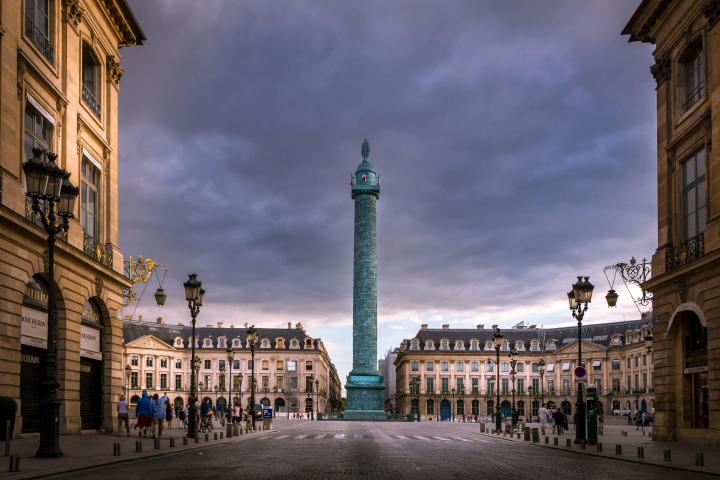
After years of disappointing returns, Carmignac’s flagship Patrimoine fund is showing signs of recovery.
In the first half of 2025, the fund outperformed its benchmark by 9.5 percent. Yet investor scepticism persists: the fund still saw net outflows of 250 million euros, bringing assets under management to just over 7 billion euros, well below the more than 30 billion euros it managed a decade ago.
The mixed picture underscores the challenges facing one of Europe’s former multi-asset champions. During the 2008 financial crisis, Carmignac Patrimoine managed to deliver positive returns. Under founder Édouard Carmignac, the fund grew rapidly, reaching a peak of 30.3 billion euros in assets by May 2013.
That ascent was followed by a long decline. Structural underperformance and strategic repositioning led to outflows of more than 20 billion euros between 2013 and 2019. Carmignac stepped down as portfolio manager in March 2019 as part of a broader retreat from day-to-day fund management.
New team, new approach
In September 2023, the firm reshuffled the team behind Patrimoine, bringing in portfolio managers Jacques Hirsch and Eliezer Ben Zimra. “We wanted to change course,” investment strategist Kevin Thozet told Investment Officer at the time. The first signs of that shift are now visible.
“All performance drivers —equities, fixed income, and cash— contributed to the result,” Hirsch said of the first-half gains in 2025. Diversified positioning and active risk management allowed the fund to weather recent market turbulence, he added.
Despite the strong relative returns, assets under management continued to shrink. Morningstar analyst Mara Dobrescu argued that caution is warranted: “Multi-asset strategies rarely outperform over the long term. Many investors opt for cheaper passive alternatives.”
Active bets paid off
Even so, it was precisely the team’s active decisions that made the difference. “We increased positions in Nvidia, Broadcom, and SK Hynix during market dips,” said Hirsch.
To hedge against market risk, the team bought put options on major US stocks when protection was still attractively priced, a strategy that paid off during the Liberation Day market sell-off. The fund also held positions in the VIX and gold to buffer volatility, Hirsch explained.
Ben Zimra highlighted the contribution from currency allocation. The fund favoured the euro and Latin American currencies over the US dollar. On the fixed income side, the fund’s duration fluctuated between -1 and 1.7 in anticipation of rising interest rates. Inflation-linked bonds benefitted from renewed rate concerns, while carry in credit markets held firm.
“We remain cautious and continue to maintain protection in credit,” Zimra said.
Strategic reset under scrutiny
The fund’s relative outperformance is not solely the result of good timing and active management. A key technical change came in January 2022, when the reference benchmark was altered. Carmignac Patrimoine switched from a 50/50 global equity-government bond mix to a 40/40/20 blend of equities, bonds, and cash. According to the managers, the new benchmark better reflects the fund’s real profile.
Comparing the fund’s performance against both the old and new benchmarks suggests that Patrimoine would have fared better historically under the current setup.
Morningstar’s Dobrescu acknowledged that benchmark changes are not uncommon, but questioned the specifics. “A global sovereign bond index for the fixed income portion is not ideal,” she said. “The fund has significant exposure to corporate bonds. A global aggregate index would have been more representative.”
At the time of writing, 9 percent of the fund’s assets are allocated to cash or cash-like instruments. Carmignac argues that the cash component reflects its liquidity and risk management strategy, aligned with the fund’s longstanding objective to limit drawdowns in bear markets. In downturns such as 2022, this cash allocation helps soften losses compared with the older 50/50 benchmark, making the new benchmark relatively harder to beat.
Costs remain high
Carmignac Patrimoine’s annual fees for the A Eur Acc share class stand at 2.29 percent, composed of 1.50 percent in management fees and 0.79 percent in transaction costs. In addition, there is a performance fee of up to 20 percent, a doubling compared to the pre-2022 era, when most share classes were subject to a 10 percent cap.
To temper this, Patrimoine introduced a five-year clawback in 2022. The fund can only charge a performance fee once past underperformance from the previous five years has been recouped. However, this mechanism only applies from 1 January 2022 onward. Losses incurred before that date remain outside the scope of the clawback.